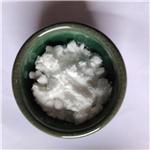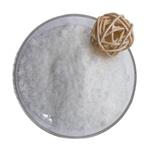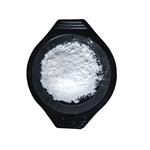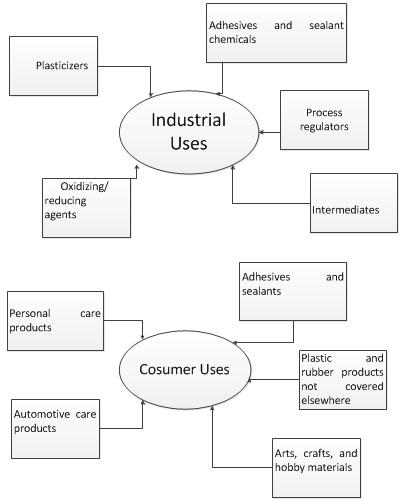- Benzoyl peroxide
-

- $0.00 / 1KG
-
2023-09-06
- CAS:94-36-0
- Min. Order: 1KG
- Purity: 99%
- Supply Ability: 500000kg
- Benzoyl Peroxide
-

- $10.00 / 1kg
-
2023-07-31
- CAS:94-36-0
- Min. Order: 10kg
- Purity: 99%
- Supply Ability: 20tons
- Benzoyl peroxide
-

- $0.00 / 25KG
-
2023-06-29
- CAS:94-36-0
- Min. Order: 1KG
- Purity: 99%
- Supply Ability: 50000KG/month
|
| | Benzoyl peroxide Chemical Properties |
| Melting point | 105 °C(lit.) | | Boiling point | 176°F | | density | 1.16 g/mL at 25 °C(lit.) | | vapor pressure | 0.009Pa at 25℃ | | refractive index | 1.5430 (estimate) | | Fp | >230 °F | | storage temp. | 2-8°C | | solubility | 0.35mg/l | | form | powder | | color | White | | Odor | odorless | | Water Solubility | Insoluble | | Merck | 14,1116 | | BRN | 984320 | | Exposure limits | TLV-TWA 5 mg/m3; IDLH 7000 mg/m3. | | Stability: | Strong oxidizer. Highly flammable. Do not grind or subject to shock or friction. Incompatible with reducing agents, acids, bases, alcohols, metals, organic materials. Contact with combustible material, heating or friction may cause fire or explosion. | | InChIKey | OMPJBNCRMGITSC-UHFFFAOYSA-N | | LogP | 3.2 at 20℃ | | CAS DataBase Reference | 94-36-0(CAS DataBase Reference) | | IARC | 3 (Vol. 36, Sup 7, 71) 1999 | | NIST Chemistry Reference | Benzoyl peroxide(94-36-0) | | EPA Substance Registry System | Benzoyl peroxide (94-36-0) |
| | Benzoyl peroxide Usage And Synthesis |
| Acne vulgaris | Although the precise cause of acne is unclear, it appears to be associated with at least four factors: increased sebum production, follicular keratinisation, bacterial colonisation and inflammation.
Study suggests the prevalent bacterium implicated in the clinical course of acne is Propionibacterium acnes (P acnes), a gram-positive anaerobe that normally inhabits the skin and is implicated in the inflammatory phase of acne.
Benzoyl peroxide is mainly indicated in the treatment of mild to moderate acne and is often prescribed in conjunction with oral antibiotics (erythromycin or clindamycin) in the treatment of moderate to severe acne.
| | Active Ingredients for Acne Medications | Benzoyl peroxide used in 2.5, 5, and 10 percent concentrations, depending on the acne severity. Usually these are in a gel spreading agent, but they can also be in a cream base or a drying paste. Benzoyl peroxide is a keratolytic, which means “keratin-dissolving” and works by loosening dead cells stuck in the follicles. It also releases oxygen in the follicle. Because acne bacteria are anaerobic, they cannot survive in the presence of oxygen. Benzoyl peroxide essentially works both as an interfollicular exfoliant and as an antibacterial.
| | Mode of action | Benzoyl peroxide is lipophilic that can penetrate the stratum corneum and enter the pilosebaceous follicle. It is rapidly broken down to benzoic acid and hydrogen peroxide and generates free radicals that oxidise proteins in bacterial cell membranes, exerting a bactericidal action. In addition, it has shown that benzoyl peroxide can reduce the free fatty acid content of sebum, which provides a useful marker for bacterial activity. Benzoyl peroxide has an anti-inflammatory action and vitro studies suggest that this action arises from its ability to kill polymorphonuclear leukocytes (PMN cells) in the pilosebaceous follicles and so prevent their release of reactive oxygen species such as peroxides which enhance tissue inflammation. Involving equation about this process:
C6H5C(O)O-OC(O)C6H5 + H2O 2 C6H5COOH + ½ O2
Moreover, due to its irritant effect, benzoyl peroxide increases turnover rate of epithelial cells, thereby peeling the skin and promoting the resolution of comedones.
| | Side effects as Acne Treatment | Skin reactions such as peeling, itching, irritation, and reddened skin may occur, especially at the start of treatment. A very serious allergic reaction to this drug is rare. This medicine may be harmful if swallowed.
| | Other Uses | 
Benzoyl peroxide is used as a bleaching agent for certain foods, an oxidizing agent, a polymerizing initiator in the manufacture of plastics, a curing agent for silicone rubber, and an ingredient in various industrial processes.
Benzoyl peroxide, like most peroxides, is a powerful bleaching agent. It has a long history of use in the food industry as a bleaching agent added for flour, whey, and milk for cheese making. Contact with fabrics or hair can cause permanent color dampening almost immediately. Even secondary contact can cause bleaching.
Benzoyl peroxide is widely used as a catalyst in the polymerisation of molecules like styrene (phenylethene) to form polystyrene, which used to make many things from drinking cups to packaging material. | | Benzoyl peroxide and Pregnancy | There are no studies looking at women who use topical benzoyl peroxide during pregnancy. When benzoyl peroxide is applied topically, only 5% is absorbed through the skin, and then it is completely metabolized to benzoic acid within the skin and excreted unchanged in the urine. It is not likely to increase risk for birth defects or cause problems for the baby. However, systemic effects on a pregnant woman and her child would not be expected and therefore use of this product during pregnancy would not be of concern.
| | References | https://medlineplus.gov/druginfo/meds/a601026.html
https://pubchem.ncbi.nlm.nih.gov/compound/benzoyl_peroxide#section=Drug-and-Medication-Information
http://www.chm.bris.ac.uk/motm/benzoyl-peroxide/benzoylh.htm
https://www.webmd.com/drugs/2/drug-1344/benzoyl-peroxide-topical/details
https://pubchem.ncbi.nlm.nih.gov/compound/benzoyl_peroxide#section=Top
https://www.ncbi.nlm.nih.gov/pmc/articles/PMC3114665/
https://mothertobaby.org/fact-sheets/topical-acne-treatments-pregnancy/pdf/
| | Description | Benzoyl Peroxide may affect workers in the electronics and plastics (epoxy resins and catalysts) industries, electricians,
ceramic workers, dentists and dental technicians,
laboratory technicians and bakers. As it was
contained in candles, it also induced contact dermatitis
in a sacristan. However, some positive tests are of
unknown occupational relevance. | | Chemical Properties | Benzoyl peroxide is an odorless, white, or colorless crystalline powder with a faint odor of benzaldehyde resulting from the interaction of benzoyl chloride and a cooled sodium peroxide solution. It is used in specified cheeses at 0.0002% of milk level. It is also used for the bleaching of flour, slowly decomposing to exert its full bleaching action, which results in whiter flour and bread. The major decomposition product of benzoyl peroxide in water was benzoic acid, but trace amounts of phenyl benzoate, phenol, and hydroxybenzoic acids were formed. When carbon-14 la- beled benzoyl peroxide was reacted with whey, the same compounds were produced.
| | Uses | Benzoyl Peroxide is a widely used organic compound of the peroxide family. It is used as a source offree radicals in many organic syntheses andto initiate polymerizations of styrene, vinylchloride, vinyl acetate, and acrylics; to curethermoset polyester resins and silicone rubbers;in medicine for treating acne; and forbleaching vegetable oil, cheese, flour, and fats. | | Definition | ChEBI: Benzoyl peroxide is a carbonyl compound. | | Indications | Benzoyl peroxide is a potent oxidizing agent that has
both antimicrobial and comedolytic properties; its primary
use is in treating acne vulgaris. It is converted in
the skin to benzoic acid; clearance of absorbed drug is
rapid, and no systemic toxicity has been observed. The
major toxicities are irritation and contact allergy.
Outgrowth of bacteria resistant to topical antibiotics
used to treat acne can be reduced by the addition of benzoyl
peroxide in combination products such as erythromycin
(Benzamycin) and clindamycin (Benzaclin). | | Brand name | Acne-Aid Cream (Stiefel); Benoxyl (Stiefel); Benzac
(Galderma); Benzac W (Galderma); Brevoxyl (Stiefel);
Clear By Design (SmithKline Beecham); Dry and Clear
(Whitehall-Robins); Epi-Clear (Bristol-Myers Squibb);
Fostex BPO Bar, Gel, and Wash (Bristol-Myers Products);
Loroxide (Dermik); PanOxyl (Stiefel); Persa-Gel (Ortho
Pharmaceutical); Vanoxide (Dermik);Altex. | | World Health Organization (WHO) | Benzoyl peroxide slowly releases oxygen and hence is
bactericidal. It is also keratolytic, antiseborrheic and irritant. It is used in the
treatment of acne. Benzoyl peroxide is listed in the WHO Model List of Essential
Drugs. | | Synthesis Reference(s) | The Journal of Organic Chemistry, 28, p. 2168, 1963 DOI: 10.1021/jo01044a002 | | General Description | Benzoyl peroxide appears as odorless white powder or granules. moderately toxic. Sinks in water. (USCG, 1999) | | Reactivity Profile | Benzoyl peroxide reacts exothermically withstrong acids, strong bases, amines, reducingagents, and sulfur compounds. Explosionshave been reported when it reacted withcarbon tetrachloride and ethylene (Bolt andJoyce 1947), lithium aluminum hydride(Sutton 1951), N,N-dimethyl aniline (Hornerand Betzel 1953), hot chloroform (NFPA1986), and methyl methacrylate (NFPA1986). Lappin (1948) reported an explosionwhen a bottle was opened. Organic matterentrapped in the threads of the bottleprobably reacted explosively with benzoylperoxide. | | Hazard | Highly toxic via inhalation. May explode
spontaneously when dry (<1% of water). Never mix
unless at least 33% water is present. Skin and upper
respiratory tract irritant. Questionable carcinogen. | | Health Hazard | The health hazard from benzoyl peroxideis low. It can cause irritation of the skin,mucous membranes, and eyes. An intraperitonealinjection of 250 mg/kg was lethal toadult mice. Systemic toxicity in humans isnot known. It may be mild to moderatelytoxic on an acute basis. The oral LD50 valuein rats is 7710 mg/kg (NIOSH 1986). Itstoxicity from inhalation is low; an LC50 valueof 700 ppm in mice is suggested (ACGIH1986).
Benzoyl peroxide may cause gene damageand DNA inhibition. It has been foundto cause skin tumor. The evidence of its carcinogenicityin animals and humans is inadequate. | | Fire Hazard | Benzoyl peroxide can cause a major fire
and explosion hazard. It is highly flammable
and a strong oxidizer; autoignition temperature
80°C (176°F). It ignites instantly. The
rate and violence of decomposition and the
potential ease of such ignition or decomposition
have been experimentally measured
by Noller et al. (1964). Lead pipe deformation
(LPD), pressure vessel test (PVT), and
self-accelerating decomposition test (SADT)
have been performed to measure these explosive
characteristics. Heating 5 g of benzoyl
peroxide in an aluminum tester containing an
aperture vent and 6-atm rupture disk, caused
the disk to blow up in 95 seconds when the
aperture vent area was less than 174.7 mm2.
Redried material was more violent. The
decomposition hazard was greatly reduced
with wet and diluted benzoyl peroxide.
Noller et al. (1964) measured the SADT
temperature at 82.2°C (180°F), above which
the decomposition was self-accelerating, sudden,
and produced smoke.
Benzoyl peroxide is a deflagrant, posing
a severe explosion hazard. The compound
is sensitive to heavy shock, such as impact
or blows, as well as to friction and heat.
Especially in the dry state, it is highly
dangerous.
A water sprinkler should be used to extinguish
fires. Water should be used to keep the
containers cool. | | Contact allergens | Benzoyl peroxide is an oxidizing agent widely
employed in acne topical therapy. It is also used as a
polymerization catalyst of dental or industrial plastics
and as a decolorizing agent of flours, oils, fats, and
waxes. Irritant or allergic dermatitis may affect workers
in the electronics and plastics (epoxy resins and
catalysts) industries, electricians, ceramic workers,
dentists and dental technicians, laboratory technicians,
bakers, and acne patients. As it was contained in candles,
it also induced contact dermatitis in a sacristan.
Patch tests may be irritant. | | Safety Profile | Poison by intraperitoneal route.Can cause dermatitis, asthmatic effects, testicular atrophy,and vasodilation. An allergen and eye irritant. Humanmutation data reported. Questionable carcinogen withexperimental tumorigenic data. Moderate fire hazard by | | Potential Exposure | Used as polymerization initiator, curing
agent, and cross-linking agent. | | Veterinary Drugs and Treatments | Benzoyl peroxide products are used topically either as gels or in shampoos. Shampoos are generally used for seborrheas, greasy skin (seborrhea
oleosa), or crusty pyodermas (such as seborrheic dermatitis/pyoderma commonly seen in Cocker Spaniels). Gels may be useful
for treating recurrent localized skin infections (e.g., chin acne), localized Demodex lesions, superficial and deep pyodermas (adjunctive
therapy), seborrhea oleosa, and Schnauzer comedo syndrome.
Benzoyl peroxide possesses antimicrobial (especially antibacterial), keratolytic and antiseborrheic actions. It also is It has some mild
antipruritic activity and wound healing effects, and is thought to increase follicular flushing. Benzoyl peroxide’s antimicrobial activity is
due to the oxidative benzoyl peroxy radicals formed that disrupt cell membranes. | | First aid | If this chemical gets into the eyes, remove anycontact lenses at once and irrigate immediately for at least15 min, occasionally lifting upper and lower lids. Seek medical attention immediately. If this chemical contacts theskin, remove contaminated clothing and wash immediatelywith soap and water. Seek medical attention immediately. Ifthis chemical has been inhaled, remove from exposure,begin rescue breathing (using universal precautions, including resuscitation mask) if breathing has stopped and CPR ifheart action has stopped. Transfer promptly to a medicalfacility. When this chemical has been swallowed, get medical attention. Give large quantities of water and inducevomiting. Do not make an unconscious person vomit.Medical observation is recommended for 24� 48 h afterbreathing overexposure, as pulmonary edema may bedelayed. As first aid for pulmonary edema, a doctor orauthorized paramedic may consider administering a corticosteroid spray. | | Carcinogenicity | When repeatedly applied to the
skin of mice, BPO was not carcinogenic . However,
benzoyl peroxide is a tumor promoter in mice and hamsters,
but has shown no complete carcinogenic or tumor-initiating
activity . There has been one controversial Japanese
report that was interpreted as BPO being a complete
carcinogen. However, when the data were critically evaluated,
it was found consistent with BPO acting as a skin tumor
promoter and not as a carcinogen. The International Agency
for Research on Cancer (IARC) has evaluated the carcinogenicity
of benzoyl peroxide. They classified it as Group 3.
This means there is limited or inadequate evidence of carcinogenicity
for animals and inadequate or absent information
for humans. In addition, there are other animals and in vitro
studies that continue to support the lack of carcinogenic or
mutagenic properties for BPO . | | Source | Benzoyl peroxide (BPO) was originally derived from chlorhydroxyquinoline, a component of coal tar. Currently, BPO is usually prepared by treating hydrogen peroxide with benzoyl chloride. | | storage | Benzoyl peroxide should be stored in acool and well-ventilated area, isolated fromother chemicals and free of heating andelectrical installations. Dry compound maybe shipped in polyethylene-lined paper bagsor fiber containers packed in wooden boxeso. | | Shipping | UN3104 : Organic peroxide type C, solid, Hazard
Class: 5.2; Labels: 5.2—Organic peroxide, Technical
Name Required. UN3108 : Organic peroxide type E, solid, Hazard
Class: 5.2; Labels: 5.2—Organic peroxide, Technical | | Purification Methods | Dissolve benzoyl peroxide in CHCl3 at room temperature and precipitate it by adding an equal volume of MeOH or pet ether. Similarly it is precipitated from acetone by adding two volumes of distilled water. It has also been crystallised from 50% MeOH and from diethyl ether. Dry it under vacuum at room temperature for 24hours. Store it in a desiccator in the dark at 0o. When purifying in the absence of water it can be EXPLOSIVE, and operations should be done on a very small scale with adequate protection. Large amounts should be kept moist with water and stored in a refrigerator. [Kim et al. J Org Chem 52 3691 1987, Beilstein 9 IV 777.] | | Incompatibilities | May explode when heated above melting
point, 103 C. A strong oxidizer. Extremely explosionsensitive
to heat, shock, friction, and concussion. May
explode or cause fire on contact with reducing agents; combustible
substances, organic substances, wood, paper, metal
powders, lithium aluminum hydride. Violent reaction with
alcohols, organic and inorganic acids, and amines. | | Waste Disposal | Pretreatment involves decomposition
with sodium hydroxide. The final solution of
sodium benzoate, which is very biodegradable, may be
flushed into the drain. Disposal of large quantities of solution
may require pH adjustment before release into the
sewer or controlled incineration after mixing with a
noncombustible material. |
| | Benzoyl peroxide Preparation Products And Raw materials |
| Raw materials | Sodium hydroxide-->Hydrogen peroxide-->Benzoyl chloride-->Poly(acrylic acid)-->Benzoic acid-->Phenylacetone | | Preparation Products | 4-METHYL-2-OXO-2 H-CHROMENE-7-CARBALDEHYDE-->3-BROMO-2-((CYCLOPROPYLAMINO)METHYL)BENZALDEHYDE-->4-bromoisoindoline-->4-Bromomethylbenzamide-->ANION EXCHANGE RESIN 717-->3-CYANOMETHYLPHENYLBORONIC ACID-->(3-FLUORO-PHENYL)-METHANESULFONYL CHLORIDE-->(4-FLUORO-PHENYL)-METHANESULFONYL CHLORIDE-->7-BROMOMETHYL-4-METHYL-CHROMEN-2-ONE-->sulfonic ion exchange membrane based on polypropylene/poly (ST-DVB)-->5-BROMOISOINDOLINE-->POLY(VINYL ACETATE)-->Flour improver-->optical diskbase material modified PMMA copolymer-->Anagrelide-->Methyl 3-(bromomethyl)benzoate-->METHYL 2,5-DICHLOROTHIOPHENE-3-CARBOXYLATE-->4-(4-METHYLPIPERAZINOMETHYL)BENZOIC ACID-->alpha,alpha'-Dibromo-p-xylene-->METHYL ALPHA-BROMOPHENYLACETATE-->ETHOPERMETHRIN,95%-->the preparation and adsorption of poly (p-hydroxystyrene) adsorbents-->Perbenzoic acid-->Polymaleic acid-->Maleic acid-allyl alcohol copolymer-->Ozagrel-->4-Cyanobenzaldehyde-->2,5-DICHLOROTHIOPHENE-3-CARBONYL CHLORIDE-->3-Nitrobenzyl bromide-->2,5-DICHLOROTHIOPHENE-3-CARBOXYLIC ACID-->Ethyl 4-bromocrotonate-->1,4-BIS(TRICHLOROMETHYL)BENZENE-->N-CHLOROMETHYL-N-PHENYLCARBAMOYL CHLORIDE-->new Ni/carbonized resin catalyst-->POLYETHYLENE, CHLORINATED-->Methyl 2-bromomethylbenzoate-->2-(Bromomethyl)pyridine hydrobromide-->maleic anhydride-benzylethylene sulfonated acid copolyer-->ethyl 4,6,6,6-tetrachloro-3,3-dimethylhexanoate-->Naled |
|